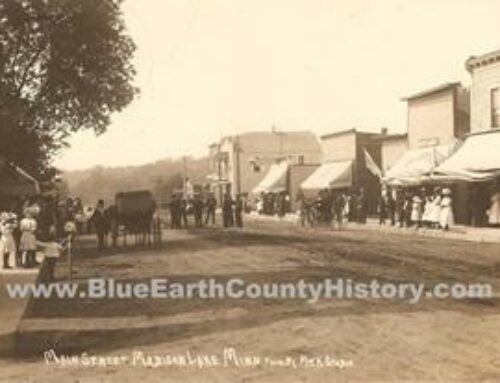Excerpt from The Heritage of Blue Earth County by Julie Schrader, Topic 67, available in the Research & Genealogy Center.
“The most striking physical feature of Danville Township is its vast openness. The original land survey of 1854, conducted by John Everett, showed the land to be composed primarily of prairie grasses and swamps. Even today, large parts of the township are marshy, and the only trees that exist are those that were planted by the settlers in rows to serve as windbreaks around their homestead during severe winters. Having a few if any trees to contend with made it easier for the farmers to plow the land into fields which served as a magnet to attract early settlers into the region. The tough prairie sod more than compensated for any easy life the settler anticipated. The marshy conditions also presented problems; because the standing water made farming impossible. Furthermore, swampy areas were breeding grounds for mosquitos, which carried a large number of diseases that were harmful and sometimes fatal to livestock and humans.
“In addition to marshes, Danville Township has several small lakes within its borders, as well as a large lake on its southern border known as Minnesota Lake. Running diagonally across the township from the southeast corner to the northwest corner flows the Big Cobb River. It is unnavigable for anything larger than a canoe; and during the summer months, it is very shallow. However, it provided the settlers with a source of fresh water as did the lakes, before wells could be dug. These bodies of water also served as a source of fish, which supplemented the settlers’ diets. The Big Cobb served as the major source of timber for the township because its banks were all that had moisture enough to sustain woods. The marshes, on the other hand, were too wet and brackish to support large trees.”




Leave A Comment